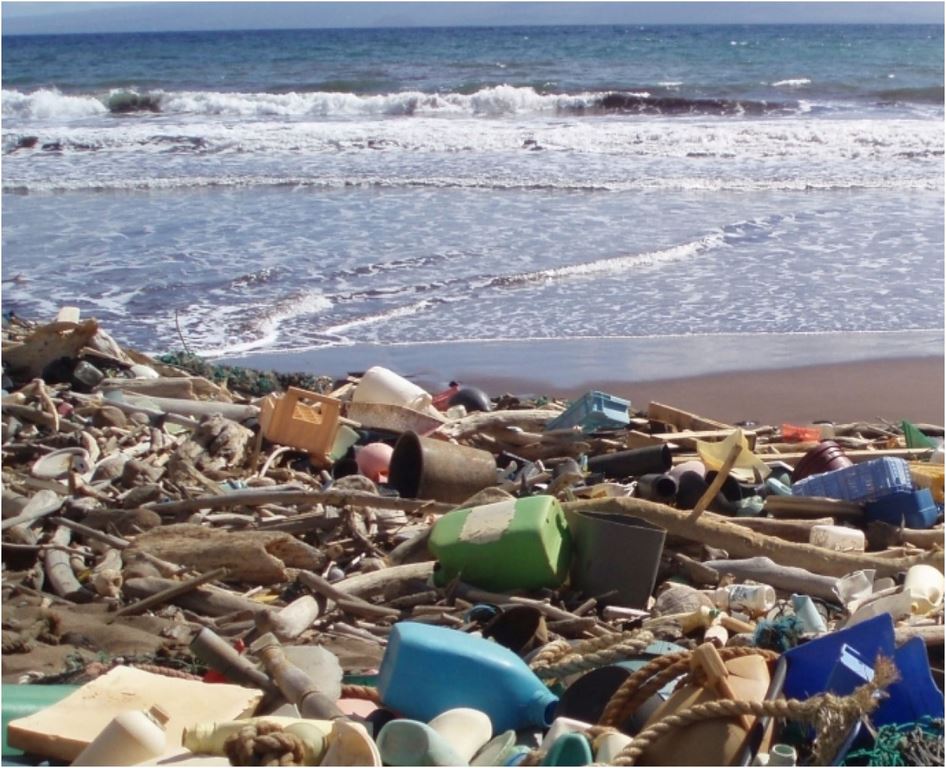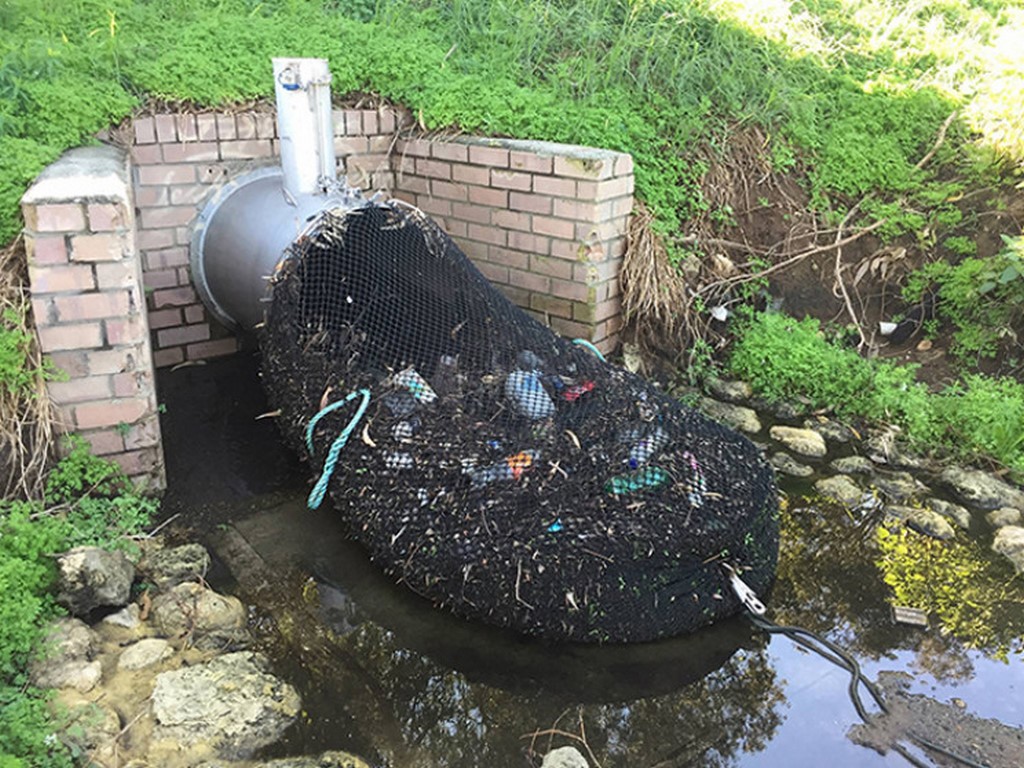A Plastic Pollution Solution

There’s an enormous garbage patch in the middle of the Pacific Ocean – comprised mostly of floating plastic trash. Known as the “Great Pacific Garbage Patch,” it’s twice the size of Texas and getting bigger. Plastic pollution has become a gigantic problem requiring big thinking combined with commonsense. One town in Australia has joined the battle with a wonderfully simple pollution solution.
By Eric Herman
Since 1907 — when Belgian-American chemist Leo Baekeland created Bakelite, the first real synthetic, mass-produced plastic — humankind has produced approximately 7.8 billion tons of the stuff. Over 300 million tons of plastic is produced annually and 8 million tons of it wind up in the ocean, every year, and the numbers are increasing.
It’s a problem that impacts marine wildlife up and down the food chain and human health, as well. This is why it’s exciting to see a simple initiative aimed at preventing such waste that realistically could be copied worldwide. The Australian city of Kwinana has designed a simple and cost-effective way to deal with the discharge of waste from drainage systems, the primary source of plastic pollution.
The concept couldn’t be more straightforward. The town has installed mesh filter nets on drainage-pipe outlets, where nets stop waste and pollutants from leaving the sewers, preventing waste transported by rain waters from entering the town’s local stream system, ultimately preventing the waste from making its way into river systems and ultimately to the ocean.
The city reported that in just six months, it collected 370 kilograms (815 pounds) of garbage from two locations where the nets are installed. The collected debris is then separated and all recyclable materials are taken to a recycling center. The nets were installed on 750mm and 450mm-diameter concrete drainage pipe outlets. In six months, they have been cleaned a total of three times and at no point have any animal been found trapped inside or injured in any way by the presence of the nets.
Carol Adams, the city mayor, revealed to SurferToday magazine, that the initiative only cost around $20,000. “After seeing the nets in action in other local government areas, the City determined the net to be the most cost-effective and safest option over other methods, which can be up to four times the cost per unit and are sealed and submerged structures,” Adams explained.
Although statistically miniscule, should Kwinana’s netting concept become widespread it could prevent significant quantities of plastic waste from entering waterways and reaching the ocean.
A GROWING PROBLEM
The scientific and environmental communities have, by broad consensus, identified plastic pollution as one of, if not the most pervasive problem affecting aquatic environments. Plastic jeopardizes ocean health, and as a result food safety and quality. It also negatively impacts coastal tourism, and contributes to climate change.
Floating plastic debris is currently the most abundant item of marine litter. It’s found from surface waters all the way down to deep-sea sediment. Plastic in oceans exists in a variety of familiar forms including shopping bags, fast food containers, beverage bottles, straws, toothbrushes, toys, packing material and much more. It has been found on the shores of all the continents; and, not surprisingly, it exists in greater quantities near densely populated areas.

The main sources of marine plastic are land-based and enter the earth’s hydrosphere from urban and storm runoff, sewer overflows, beach visitors, inadequate waste disposal and management, industrial activities, construction and illegal dumping. Leading polluters include the fishing industry, industrial and recreational nautical activities and aquaculture.
Plastic breaks down into small fragments as a result of solar UV radiation, wind, currents and other natural factors. The resulting particles are defined as microplastics (particles smaller than 5 mm) or nano-plastics (particles smaller than 100 nm). When plastic breaks down to such small sizes, it is easily ingested by sea life of all types, where permanently becomes part of the food chain.
ENVIRONMENTAL IMPACT
The most visible and disturbing impact of marine plastics is the threat it poses to marine animals. Wildlife including seabirds, whales, fish and turtles, often mistake plastic waste for prey, and when they eat it many die of starvation as their stomachs are filled with plastic debris instead of food. Plastics inflict lacerations, cause infections, reduce the ability to swim, and lead to internal injuries among other maladies. Floating plastics also contribute to the spread of invasive marine organisms and bacteria, which further disrupt ecosystems.
On land, our human world is impacted as microplastic is found in tap water, beer, salt and other food substances. Several of the chemicals used in the production of plastic materials are known to be carcinogenic. Some can interfere with several of the body’s key functions, including the endocrine system, causing developmental, reproductive, neurological, and immune disorders, in both humans and wildlife.
Those contaminants are eventually transferred from marine species and humans through the consumption of seafood, a process that now has been classified as a health hazard by the World Health Organization.
The good news in all of this is that global concern and public awareness regarding the impact of plastic on the marine environment are increasing. The United Nations Environment Program (UNEP) lists plastic marine debris –and its ability to transport harmful contaminants– as one of the most impactful issues negatively affecting the environment.
Legal efforts have been made at the international and national levels to address marine pollution. These efforts are not new and include many constituents. While those efforts represent hope and progress, compliance is still relatively dismal, which is largely due to limited financial resources devoted to enforcement.
In some places, governments, research institutions and industries are in the early stages of redesigning products and rethinking their usage and disposal. In the prospective sense, this will require solutions that will go beyond waste management, taking into account the entire lifecycle of plastic products, from product design to infrastructure and household use, to disposal and re-use.
LOOKING AHEAD
Scientists are sounding the alarms, pointing out that by dispensing so much plastic into the environment, future archaeologists will identify this era by the synthetic waste that was left behind, begging the question, are we already living in the “Plastic Age?”
Maybe there is still time to reverse this destructive process trend; and, encouragingly, the technology and methodologies to make that happen already exist. Some of the solutions are simple, while others, such as harvesting floating plastic efforts that have already begun, are far more complex.
Perhaps small measures like those in Kwinana can be a big part of the solution to plastic pollution.









